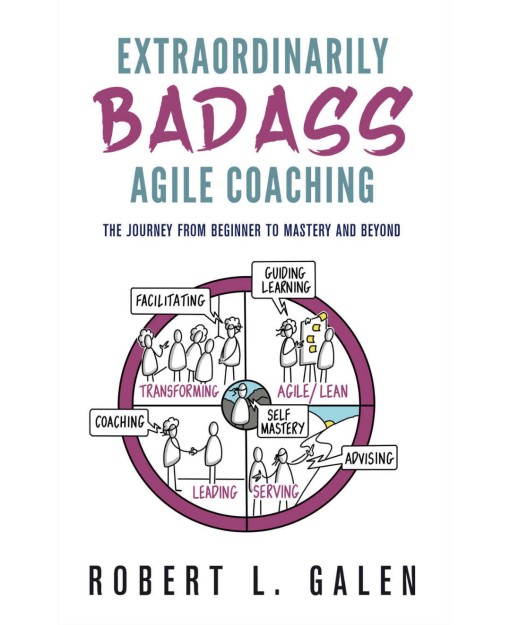
Chapters 8 and 9 of Badass Agile Coaching: The Journey from Beginner to Mastery and Beyond are written by Mark Summers of Beliminal. The chapters are a story of a coach engaging in an organizational shift to Agile and the workshops the coach used to get things moving in the right direction. The story fits into a business novel genre. I noticed a pattern in my reading as I worked through these chapters. During my first comprehensive read of a book of this type, I have a tendency to harvest practices and techniques, but the philosophy the author(s) are delivering flows around me. I suspect that what I find valuable in the parable is less the story and the macro rationale for behaviors but rather the tools the author is using to show how the characters are being manipulated. The activities are the punchline for me in my current reading context. The big takeaways include the flow of planning of interactions, using a combination of stances, the post-interaction review-reflections, and the interaction with a mentor. Each of these activities or groups of activities requires upfront planning and conscious execution. Extraordinary badass agile coaching is not a profession where winging it works forever. When I was discussing using this book in the re-read series with colleagues, some said to me that they really did not want to be badass because it took too much effort. Maybe they were being facetious or sarcastic, but in reality, being good, at anything, is not a spectator sport. The comment was one of those things you just can’t unhear. The moral is to put in the effort and think before speaking.
One of the concepts in the two chapters that struck me was the idea of establishing accountability. I have been working with a team that feels they are powerless to say no to anything. The work they have said yes to and then started but not completed is staggering. Part of the issue is that no one has ownership of any individual item, therefore, there is no accountability. I think everyone notionally acknowledges that someone should own a piece of work, even if it is just when they are doing the work, but when you have eighteen balls in the air it is so easy to forget who is responsible and accountable. I had one team member tell me that their last agile coach told them the team is accountable, which they interpreted (and took to heart) as no individual was ever responsible and accountable for their actions. It is interesting that when establishing clear accountability is not the cultural norm, people do not react well to being pressed on the ownership of accountability. As a coach, picking the right stance to ensure someone takes ownership is difficult. I have seen accountability assigned – that is not the same thing as someone taking ownership. Turning that conversation from assignment to taking responsibility and accountability requires multiple stances including coaching (for the questions) and advising (to help people see that being volun-told does not establish ownership).
One technique that was new to me was the use of “even over” to expose trade-offs. I want “this” even over “that”. The technique forces the participants to identify trade-offs they will find acceptable. I want to try this technique when helping teams or organizations identify the changes they need to make when shifting from their current culture to a new state. I foresee a workshop contrasting the behavior that their culture drives to the future state they believe they aspire to. With the differences highlighted, we can establish and acknowledge who owns championing each behavior change. This creates an environment where accountability is established.
I tend to avoid business novels, I would instead read a science fiction or murder mystery when I want fiction; however, injecting a novelized case study in the middle of the standard business text is far more effective than I would have guessed. The two chapters have provided food for thought during several long dog walks.
Source link
